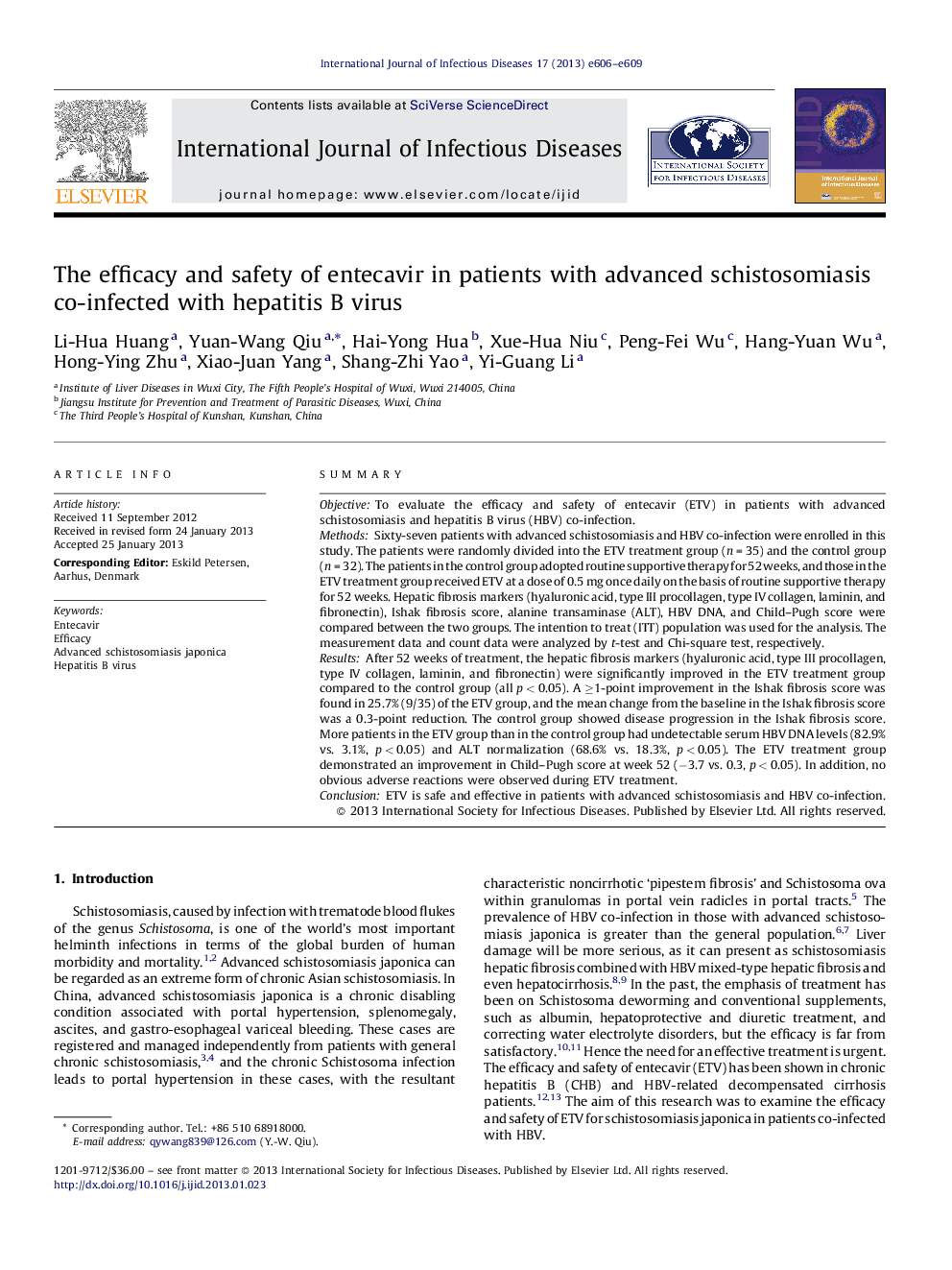| Article ID | Journal | Published Year | Pages | File Type |
|---|---|---|---|---|
| 3362789 | International Journal of Infectious Diseases | 2013 | 4 Pages |
SummaryObjectiveTo evaluate the efficacy and safety of entecavir (ETV) in patients with advanced schistosomiasis and hepatitis B virus (HBV) co-infection.MethodsSixty-seven patients with advanced schistosomiasis and HBV co-infection were enrolled in this study. The patients were randomly divided into the ETV treatment group (n = 35) and the control group (n = 32). The patients in the control group adopted routine supportive therapy for 52 weeks, and those in the ETV treatment group received ETV at a dose of 0.5 mg once daily on the basis of routine supportive therapy for 52 weeks. Hepatic fibrosis markers (hyaluronic acid, type III procollagen, type IV collagen, laminin, and fibronectin), Ishak fibrosis score, alanine transaminase (ALT), HBV DNA, and Child–Pugh score were compared between the two groups. The intention to treat (ITT) population was used for the analysis. The measurement data and count data were analyzed by t-test and Chi-square test, respectively.ResultsAfter 52 weeks of treatment, the hepatic fibrosis markers (hyaluronic acid, type III procollagen, type IV collagen, laminin, and fibronectin) were significantly improved in the ETV treatment group compared to the control group (all p < 0.05). A ≥1-point improvement in the Ishak fibrosis score was found in 25.7% (9/35) of the ETV group, and the mean change from the baseline in the Ishak fibrosis score was a 0.3-point reduction. The control group showed disease progression in the Ishak fibrosis score. More patients in the ETV group than in the control group had undetectable serum HBV DNA levels (82.9% vs. 3.1%, p < 0.05) and ALT normalization (68.6% vs. 18.3%, p < 0.05). The ETV treatment group demonstrated an improvement in Child–Pugh score at week 52 (−3.7 vs. 0.3, p < 0.05). In addition, no obvious adverse reactions were observed during ETV treatment.ConclusionETV is safe and effective in patients with advanced schistosomiasis and HBV co-infection.
